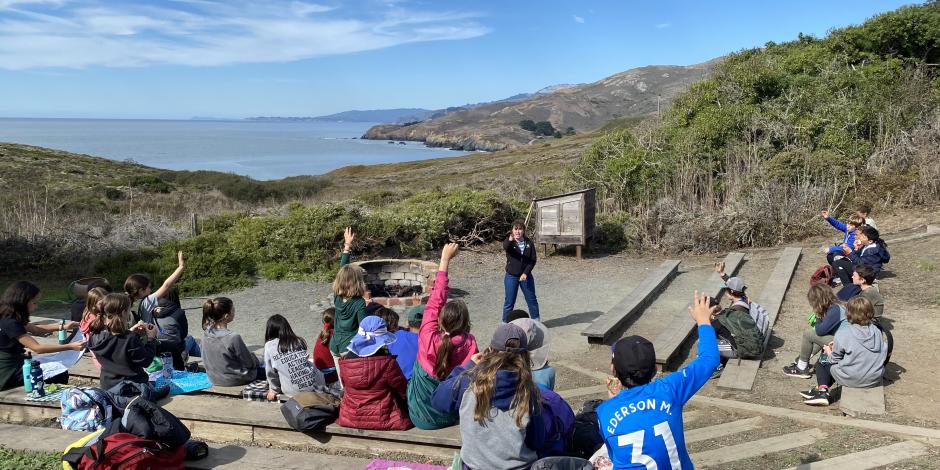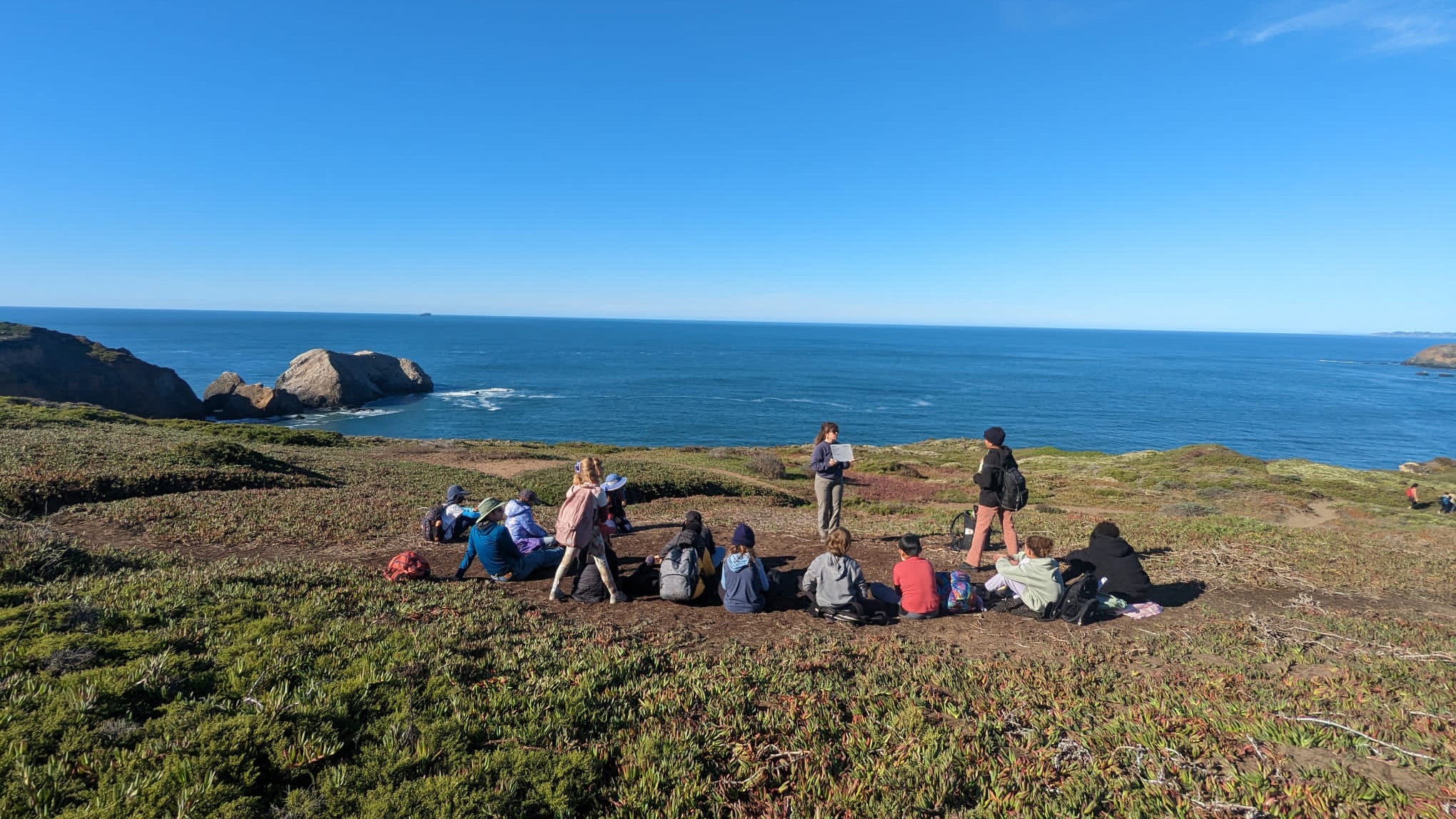Three Generations of Outdoor Learning

Editor’s note: Guest blogger Estrella Risinger is a NatureBridge student alum, a former staff member at NatureBridge and the current Executive Director of California Association for Environmental and Outdoor Education.
Full circle. That’s the phrase that kept running through my mind as I drove into the Marin Headlands, eagerly anticipating the smiles I expected to see from the students I was tasked with meeting at NatureBridge’s Golden Gate campus. I had signed up as a driver to bring a group of fifth graders back to school after three days and two nights learning and playing together on the coast. The trip was a rite of passage, a cornerstone experience for their grade. As I came upon the group doing their final wrap-up and graduation ceremony on wooden benches overlooking the Pacific Ocean, there was one smile in particular I was looking for. “Mama! I love NatureBridge!” I heard as I was tackled by my ten-year-old in a huge hug. Growing up in a family that loves camping and regularly takes hikes in the East Bay Hills, this wasn’t a total surprise, but as a former NatureBridge staff member for nearly 10 years and a past participant myself, I couldn’t help but take a breath of relief.
Jackie and Sadie, the two NatureBridge educators, asked the group, “What were some of your favorite memories of this week?” Students shared their memories enthusiastically, each one eliciting cheers and nods of agreement from their classmates: “Hiking!” “The food!” “Holding hermit crabs in the marine lab!” “Seeing all the wildlife!” “Rolling down Ice Plant Hill!”
Immersive, experiential learning outdoors shouldn’t be optional, only available for those who have access to resources, but a cornerstone of EVERY young person’s educational journey.Estrella Risinger, former NatureBridge student and staff member
Reflecting on my own NatureBridge experiences as a student at what was then called Yosemite Institute, I still remember the chocolate pudding in the cafeteria, the awe and wonder of hiking up the Mist Trail alongside Vernal Falls and the pride at making it through the Spider Caves in the dark with the help of my friends. These experiences brought us closer together as a community; they introduced us to important concepts like glaciation and redwood ecology; they helped us to find inner reserves of strength, pushing us outside our comfort zones while holding us as we tried new things and climbed to new heights.
My trips to NatureBridge were the highlights of my educational journey. These childhood trips were made possible by the efforts of dedicated and passionate teachers who insisted the trips were worth the time spent away from the classroom and administrators who allocated the school’s resources towards the additional expenses. One of those teachers just so happened to be my dad, who was so inspired by outdoor education that he went on to found and operate Camp Chrysalis, a nature-based summer camp that takes Bay Area kids to Big Sur, Mendocino and the Sierra Nevada. Camp Chrysalis is still in operation today, and my dad has been one of my greatest inspirations in this work.

A group of students with their NatureBridge educator gather in a seated circle on a seaside bluff overlooking the Pacific Ocean
How many of you have a similar story: early experiences that shaped who we are today, encouraged our love and connection to the natural world and inspired us to share those same experiences with others?
We are the lucky ones. The unfortunate truth is that while these experiences are common in the outdoor and environmental education community, they are not the norm for most students in California. With increased emphasis placed on test scores and what are considered core academics, the high cost of transportation and strained resources on schools and families alike, field trips—especially overnight experiences—are rarely prioritized.
It’s not just a field trip; it’s the foundation for our collective future.Estrella Risinger, former NatureBridge student and staff member
Immersive, experiential learning outdoors shouldn’t be optional, only available for those who have access to resources, but a cornerstone of EVERY young person’s educational journey. That’s why we at California Association for Environmental and Outdoor Education are working to strengthen environmental education in California by connecting providers, building professional expertise and championing environmental literacy and outdoor learning. Together with our members, including NatureBridge, we can ensure that future generations have access to meaningful learning experiences outdoors, because it’s not just a field trip; it’s the foundation for our collective future.
Photos courtesy of Estrella Risinger and AEOE

